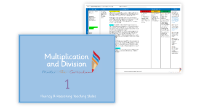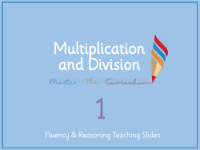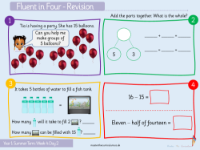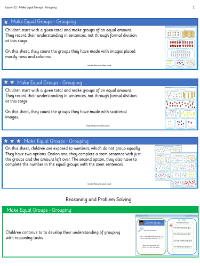Multiplication and division - Make equal groups grouping - Planning
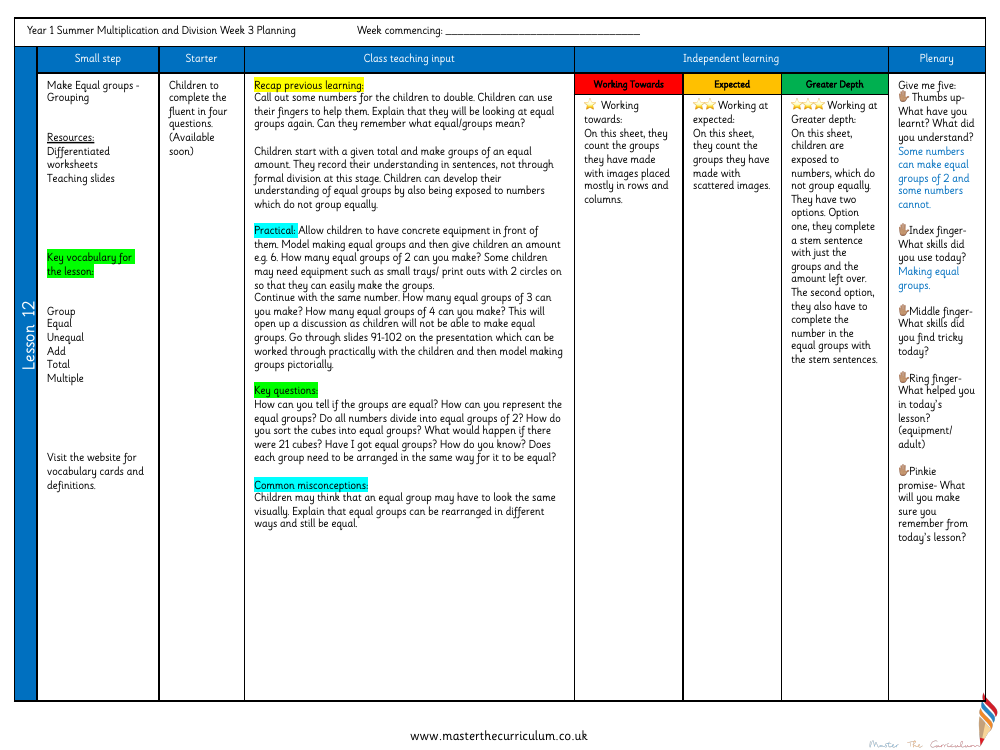
Maths Resource Description
In the Year 1 Summer term, a lesson on multiplication and division focuses on the concept of making equal groups through grouping. The objective of the lesson is to help children understand and create equal groups and recognise when groups do not divide equally. The session begins with a starter activity that involves doubling numbers, using fingers as a practical aid, to recap prior knowledge. The main teaching input guides children to start with a total number and then create groups with equal amounts, expressing their understanding in sentences rather than using formal division. This approach not only reinforces the concept of equal grouping but also introduces the idea of unequal grouping, expanding their comprehension of division.
During the lesson, practical activities play a crucial role, with children using concrete equipment such as trays or printouts with circles to physically form equal groups. For example, given the number 6, they explore how many equal groups of 2, 3, and 4 can be made, leading to discussions when equal groups cannot be formed. This hands-on experience is complemented by teaching slides and pictorial representations to deepen their understanding. Key questions encourage critical thinking about group equality and representation. A common misconception addressed is that equal groups must look the same visually, which is clarified through explanation and varied arrangements of groups. The plenary includes a reflective 'Give me five' activity, where children articulate what they've learned, the skills they've used, and their key takeaways. Differentiated worksheets cater to varying levels of understanding, from counting groups in rows and columns to handling numbers that do not group equally, and completing sentences with the correct number of groups and remainders.
